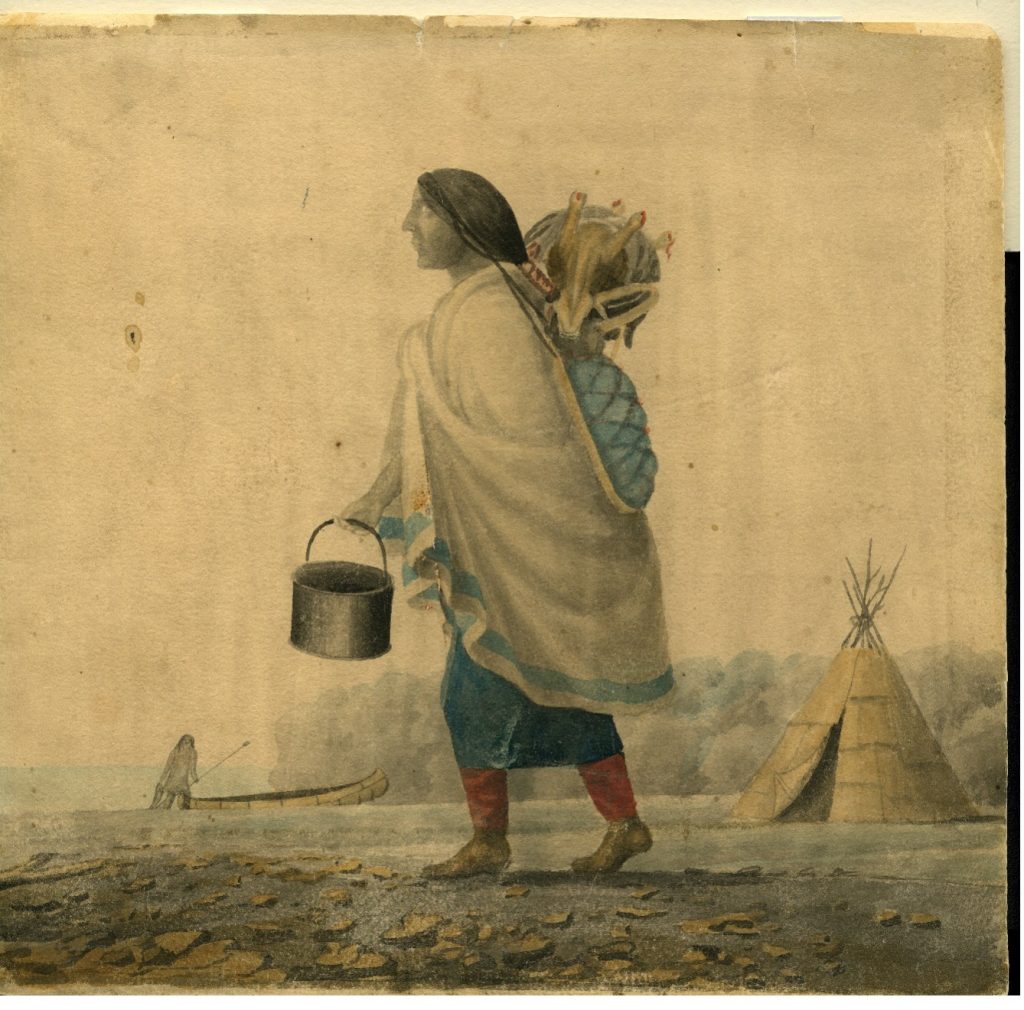Commerce des fourrures au Fort William
Une chronologie à travers l'art
1805–1882
Library and Archives Canada, e011782571
Octobre 2023 à mars 2024
Admission par don
Pour célébrer 50 ans passés à donner vie à l’histoire en tant qu’attraction provinciale, le parc historique du Fort William (FWHP), en partenariat avec la Thunder Bay Historical Museum Society, présente 45 œuvres d’art, exécutées par 18 artistes différents, rassemblées à partir de 11 collections. Ces œuvres ont été organisées par Shawn Patterson, chef d’équipe des collections du FWHP, et pourront être consultées d’octobre 2023 à mars 2024. Cette exposition capture le dynamisme, l’agitation et les habitants de Fort William et de ses environs tout au long du XIXe siècle.

45 œuvres d’art, créées par 18 artistes et rassemblées à partir de 11 collections
À propos de l'exposition
À la fin du XVIIIe siècle et au début du XIXe siècle, la Compagnie du Nord-Ouest est un géant transcontinental qui s’étend du golfe du Saint-Laurent aux océans Arctique et Pacifique.
En 1803, la Compagnie du Nord-Ouest déplace son siège intérieur du Grand Portage au côté britannique de la frontière, là où la rivière Kaministiquia rencontre le lac Supérieur. Les Anishinaabe (Ojibway) locaux sont mécontents de ce déménagement, car ils estiment qu’ils ont le droit d’installer leurs négociants où bon leur semble. Pour les Nor’Westers, le déménagement est nécessaire pour éviter les taxes, une conséquence probable s’ils continuent à exploiter du côté américain de la rivière Pigeon.
D’abord nommé Fort Kaministiquia, le quartier général intérieur est rebaptisé Fort William en 1807 en l’honneur du directeur en chef, William McGillivray. Stratégiquement situé, le fort servait de point de transbordement entre les postes d’hivernage de la Compagnie dans l’ouest et son siège à Montréal. Complexe important de dizaines de bâtiments, ressemblant davantage à une ville qu’à un poste de traite des fourrures, cette communauté était dépourvue d’école et d’église, la plupart des occupants vivant ailleurs la majeure partie de l’année.
Pendant 18 ans, la Compagnie du Nord-Ouest a tenu son rendez-vous annuel au fort William, avec plus de 1000 voyageurs campés autour de la palissade chaque année en juillet. Au cours de ce rendez-vous, les partenaires de la Compagnie discutent de leurs affaires, préparent les approvisionnements en provenance de l’est pour les expédier aux postes de l’intérieur de l’ouest et préparent les fourrures recueillies dans ces postes pour les expédier à l’est, à Montréal, puis en Angleterre.
En 1821, cette tradition a changé, tout comme l’importance de Fort William. La fusion entre la Compagnie du Nord-Ouest et la Compagnie de la Baie d’Hudson, cette année-là, réduisit le magnifique dépôt à un siège de district et, peu après, à un simple poste de traite des fourrures.
Sous l’égide de la nouvelle compagnie, qui conserve la marque de la Compagnie de la Baie d’Hudson, Fort William continue de commercer avec les Anishinaabeg et finit par exploiter une importante pêcherie dans la région. Son importance pour le commerce des fourrures d’un océan à l’autre avait considérablement diminué, mais son importance en tant que centre régional pour le commerce et sa fonction de centre social ont continué à se développer dans les années 1880, pour finalement servir de noyau à l’actuel Thunder Bay.
Le 3 juillet 1973, Sa Majesté la Reine Elizabeth II a officiellement ouvert au public le parc historique du Fort William. Aujourd’hui, une reconstitution complète de 50 bâtiments est disposée sur un site de 25 acres, comme à l’époque de la Compagnie du Nord-Ouest.
Pour célébrer 50 ans d’histoire vivante, le parc historique du Fort William, en partenariat avec la Thunder Bay Historical Museum Society, présente 45 œuvres d’art, exécutées par 18 artistes différents, rassemblées à partir de 11 collections. Cette exposition présente le Fort William à son apogée, au début du XIXe siècle, jusqu’à son long déclin, avant l’émergence des années de prospérité de la région de Lakehead à la fin du siècle.
Tout au long de cette exposition, vous remarquerez que certains titres et inscriptions utilisent une phraséologie qui ne serait pas considérée comme acceptable aujourd’hui. Bien qu’imparfaits au regard des normes du 21st siècle, il s’agit des écrits originaux des artistes et ils reflètent le langage courant de l’époque.
fwhp.ca